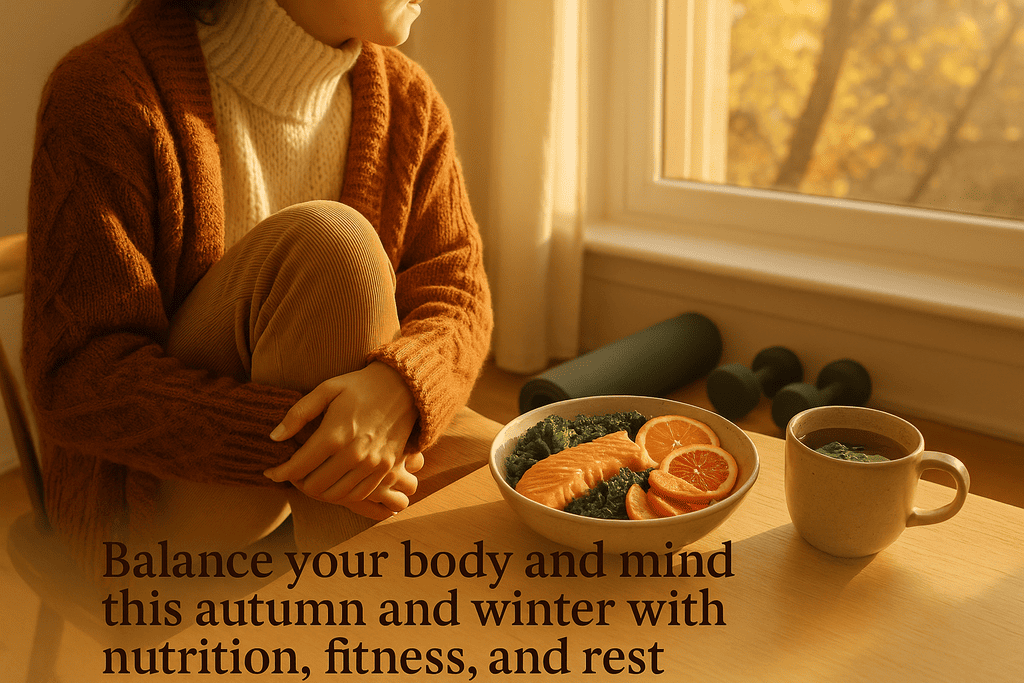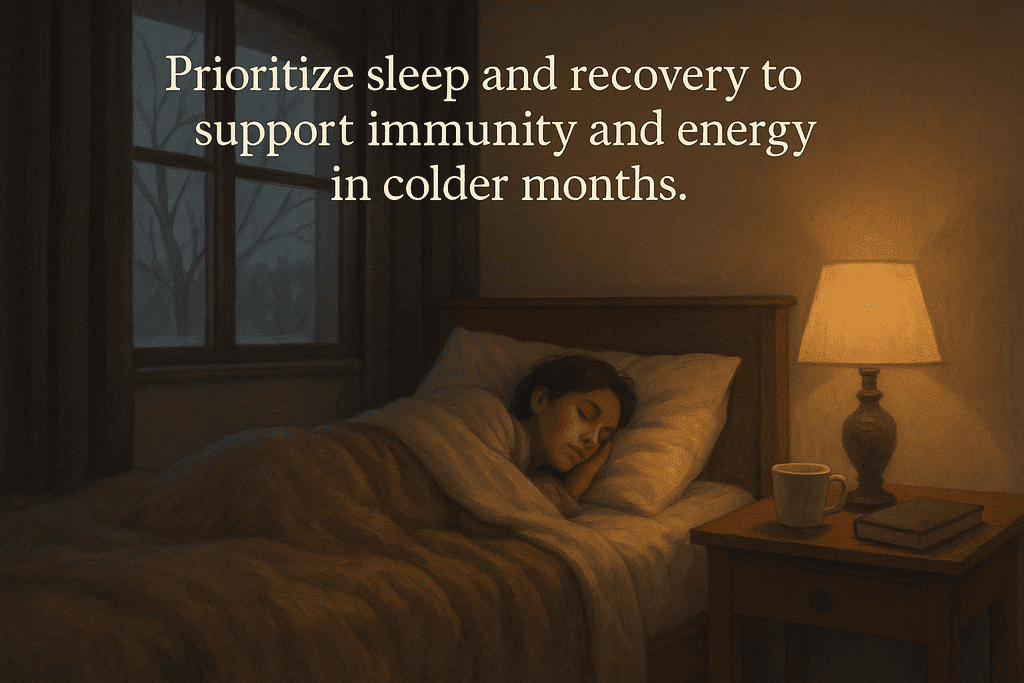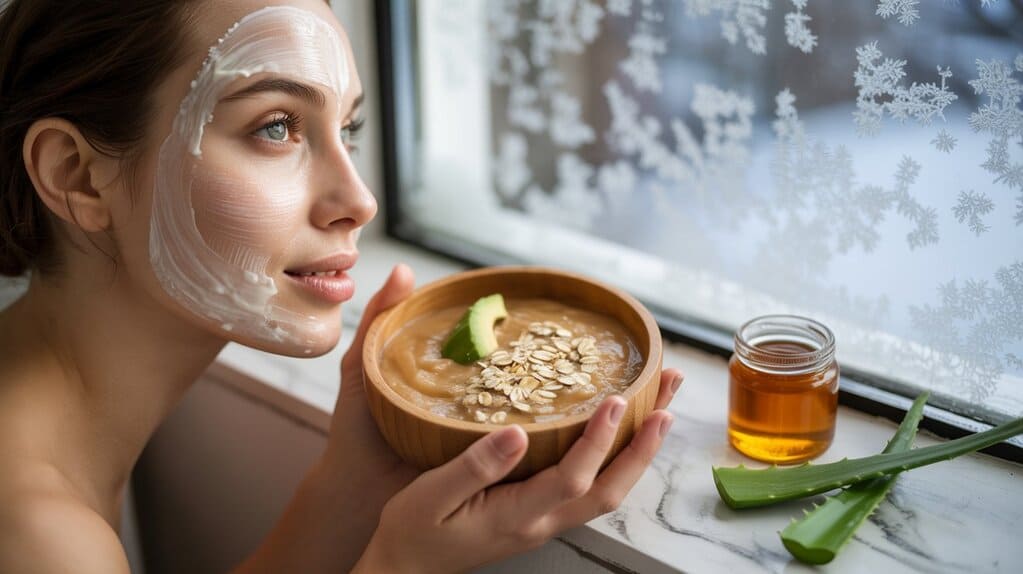
Introduction
The transition from autumn to winter is a time of shifting daylight, cooling temperatures, and changing routines. For many people this season brings a higher risk of respiratory infections, lower mood, and reduced outdoor activity. With simple, evidence-based adjustments in seasonal nutrition, exercise routines, sleep hygiene, and rest and recovery, you can maintain peak immune system function, preserve strength and mobility, and feel energetic and resilient through the colder months. This guide pulls together recent scientific findings and practical, SEO-friendly strategies to help you build an autumn-winter wellness plan that’s realistic and sustainable. Frontiers+1
Key points
- Prioritize vitamin D and nutrient-dense foods during low-sun months. MDPI
- Maintain moderate, regular exercise — both aerobic and resistance training — to support immune function and mood. SpringerLink
- Protect sleep and circadian rhythm (regular bed/wake times, daylight exposure) to preserve immunity and mental health. BMJ Open
- Support gut health with dietary fiber and probiotics; the gut microbiome is central to immune resilience. Frontiers
- Balance activity with scheduled rest and recovery to avoid overtraining and impaired immunity. PMC
Body
1. Seasonal Nutrition — eat for immunity and steady energy
Why it matters: In colder months people often eat more processed comfort foods, get less fresh produce, and are exposed to less sunlight (reducing vitamin D synthesis). A winter-focused nutrition plan protects immune function, maintains metabolic health, and supports mood. Recent reviews emphasize whole foods, adequate protein, and key micronutrients (vitamin D, vitamin C, zinc, selenium) as cornerstones of winter immune support. Frontiers+1
Practical strategies
- Eat a colorful plate every day: leafy greens, cruciferous vegetables, citrus, berries (fresh or frozen) to supply vitamins, flavonoids, and antioxidants. Frontiers
- Include fatty fish or fortified foods twice weekly for vitamin D and omega-3 intake; consider supplements if blood tests or risk factors indicate deficiency. Guidelines and consensus statements recommend targeted vitamin D supplementation for those with low sun exposure. MDPI+1
- Prioritize protein at each meal (fish, poultry, legumes, dairy, eggs) to preserve muscle mass during cooler months when activity can decline. Frontiers
- Support the gut with fiber-rich whole grains, fermented foods (yogurt, kefir, kimchi), and, when appropriate, evidence-backed probiotic strains to help reduce incidence and severity of respiratory infections. Frontiers
Seasonal foods checklist (examples): salmon, mackerel, fortified milk/oat milk, oranges, kale, sweet potatoes, oats, beans, yogurt, nuts and seeds.

2. Movement and Fitness — keep it regular, varied, and manageable
Why it matters: Evidence consistently shows that regular moderate exercise enhances immune surveillance, lowers systemic inflammation, and reduces infectious disease risk compared with sedentary behavior — while extreme overtraining can transiently suppress immunity. Recent large reviews and position statements emphasize maintaining consistent aerobic activity plus resistance training to support cardiovascular health, muscle mass, and immune resilience. SpringerLink+1
Seasonal training plan (practical)
- Weekly goal: Aim for 150–300 minutes of moderate aerobic activity OR 75–150 minutes of vigorous activity (as tolerated), plus 2 sessions of resistance training focusing on major muscle groups. Break sessions into shorter bouts if daylight/time is limited. SpringerLink
- Home-friendly options: brisk walking, stair climbing, bodyweight strength circuits, resistance bands, short high-effort intervals (tabata-style) — useful when outdoor conditions are poor.
- Mind the balance: schedule rest days and use sleep and perceived fatigue to guide session intensity; avoid pushing into chronic overtraining which can compromise immunity. PMC

3. Sleep, Circadian Health, and Light — protect your biological clock
Why it matters: Seasonal changes in daylight and temperature can alter sleep timing and quality. Disrupted circadian rhythms and poor sleep are linked to impaired immune responses and increased susceptibility to infection. Interventions that stabilize sleep and increase daytime light exposure are supported by the literature for improving alertness and health across seasons. BMJ Open+1
Practical sleep tips
- Keep a consistent sleep schedule (bedtime and wake time within 30–60 minutes daily).
- Maximize daylight exposure in the morning — 10–30 minutes outside or near a bright window helps entrain the clock. Consider a light box for shorter daylight regions (follow device guidelines). BMJ Open
- Optimize sleep environment: cool, dark, and quiet bedroom; avoid screens 60–90 minutes before bed.
- Prioritize sleep quantity and quality — adults generally need 7–9 hours for optimal immune and cognitive function. Oxford Academic
4. Recovery, Stress, and Mental Health — rest is a performance tool
Why it matters: Psychological stress, social isolation, and poor recovery reduce immune resilience. Interventions such as mindfulness, social connection, and active recovery (stretching, light mobility) are low-cost ways to preserve mental health and immune function during the colder seasons. Recent multidisciplinary reviews and editorials emphasize whole-person strategies. Frontiers
Practical recovery strategies
- Schedule “active rest”: light walks, yoga, mobility work on recovery days.
- Use stress-reduction techniques: breathing exercises, short meditations, journaling, or time with friends/family.
- Vaccination and hygiene: combine lifestyle measures with evidence-based clinical prevention (seasonal influenza vaccine, recommended COVID/RSV updates where applicable) — vaccines remain critical in reducing disease burden. (Local guidelines will specify timing and eligibility.)
5. Targeted supplements and clinical considerations
Evidence-based supplement highlights
- Vitamin D: supplementation reduces risk/severity of respiratory infections in people with low vitamin D levels; follow clinical guidance for dosing and consider testing for those at risk. MDPI+1
- Probiotics: selected strains (e.g., Lactobacillus spp., Bifidobacterium spp.) show modest benefits in reducing respiratory infection incidence in some trials; they are best used as part of a food-first approach. Frontiers
- Multivitamins/minerals: targeted correction of deficiencies (zinc, iron, B12) is important; unnecessary megadoses are not recommended.
When to see a clinician
- Recurrent infections, unexplained weight loss, persistent fatigue, or signs of nutrient deficiency (pallor, neuropathy) should prompt medical assessment and blood testing (CBC, ferritin, 25(OH)D, B12, thyroid panel).

Quick reference table — autumn → winter action plan
| Focus | What to do this season | Why it helps |
|---|---|---|
| Nutrition | Add fatty fish, fortified foods, frozen berries, legumes; consider vitamin D if low sun | Maintains vitamins, reduces deficiency risk |
| Exercise | 150–300 min moderate activity/week + 2 strength sessions | Supports immunity, mood, muscle mass |
| Sleep | Consistent schedule; morning light; 7–9 hours | Preserves circadian rhythm and immune function |
| Gut health | Fiber, fermented foods, targeted probiotics | Supports mucosal immunity |
| Recovery | Rest days, stress management, hydration | Prevents overtraining and immune suppression |
Conclusion
Moving from autumn into winter doesn’t mean surrendering energy, fitness, or wellness. By combining a seasonal nutrition plan (whole foods, vitamin D awareness), a regular and varied exercise routine, disciplined sleep and circadian care, and deliberate rest and stress management, you create a resilient foundation for the colder months. Evidence from recent reviews and expert guidelines across Europe, North America, and Asia supports this integrated approach — small, consistent changes produce big returns for immune function, mental health, and long-term fitness. Start with one or two changes this week (add a protein at breakfast, move for 20 minutes a day, or set a consistent sleep time) and build gradually — your body and immune system will thank you.
References
- Płudowski P., et al. Guidelines for Preventing and Treating Vitamin D Deficiency. Nutrients. 2023. MDPI
- Office of Dietary Supplements (NIH). Dietary Supplements for Immune Function and Infectious Disease. NIH ODS fact sheets. 2025. Bureau des Suppléments Alimentaires
- Chastin S.F.M., et al. Effects of Regular Physical Activity on the Immune System. Sports Medicine (review). 2021. SpringerLink
- da Silveira M.P., et al. Physical exercise as a tool to help the immune system. PMC review. 2020. PMC
- Korivi M., et al. Nutritional and physical activity strategies to boost immunity. Frontiers editorial/research topic. 2022. PMC
- Matre D., et al. Night work, season and alertness as occupational safety factors. BMJ Open. 2023. BMJ Open
- Alagawany M., et al. The strategy of boosting the immune system under infectious diseases. Frontiers (review). 2021. (Probiotics and immune modulation). Frontiers





